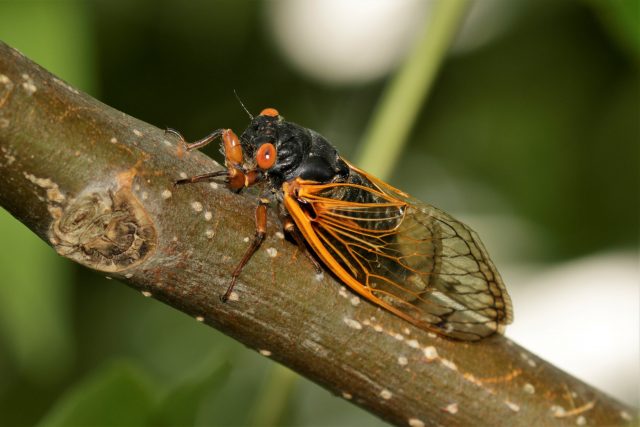
ROSS COUNTY, OH — A rare and awe-inspiring natural event is set to unfold this spring across Ross County and much of southwestern Ohio: the emergence of Brood XIV (14) periodical cicadas. The Ohio Department of Natural Resources (ODNR) Division of Forestry announced that residents should begin seeing these unique insects by late May, when soil temperatures reach about 64 degrees.
Unlike annual cicadas that appear each summer, periodical cicadas spend either 13 or 17 years underground before surfacing in massive numbers to mate. These particular cicadas belong to Brood XIV, one of 15 known broods in North America, and they haven’t been seen in Ohio since 2008.
Ross County is among more than a dozen counties across the region—including Pike, Jackson, Highland, Scioto, and Clermont—that will witness the emergence. While some edge counties may see fewer insects, central areas like Ross are expected to experience a significant emergence.
“We encourage everyone to take this unique opportunity to appreciate and learn more about these fascinating native forest insects and their value in naturally functioning ecosystems,” said Tom Macy, forest health program manager for the ODNR Division of Forestry.
Periodical cicadas are known for their striking appearance—black bodies, bright red eyes, and translucent wings—as well as their unmistakable and deafening mating calls. Males produce these sounds to attract females, after which females lay eggs in tree branches. This egg-laying can result in a condition called “flagging,” where the tips of small branches wither and die.
While cicadas do not bite or sting and are harmless to humans and pets, the ODNR advises extra care for newly planted or small trees. These vulnerable plants can be protected with fine netting during the few weeks cicadas are active. The use of pesticides is not recommended.
The Division of Forestry emphasizes that the cicadas provide ecological benefits as a food source for birds, mammals, and even fish. They also help aerate soil and contribute nutrients back to the earth once they die.
ODNR encourages residents to help document the event using the Cicada Safari app, a citizen science tool that tracks cicada sightings and contributes to research.
This spring’s emergence offers a rare opportunity to witness one of nature’s most fascinating life cycles. In just a few short weeks, the Brood XIV cicadas will rise, sing, reproduce—and then vanish underground for another 17 years.
For more information, visit forestry.ohiodnr.gov or follow @odnrforestry on Facebook and Instagram.










